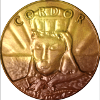Runic Infusion: Theory and Practice
Forward: The material world is suffused with the frozen stuff of creation, the mute and mindless will of being. Every aspect of physicality is permeated with a form of potential energy - raw magic.
These untapped sources may not normally be interfaced by mortals born to Toril. It is only through the Weave maintained by the successors of Mystryl that raw magic is presented, touched and shaped. But the energy exists whether or not it is seen.
While all physicality is infused with the potential, the distribution of raw magic can be uneven. Distortions, both natural and unnatural, exist. Untenable concentrations of raw magic can lead to the degradation of material objects.
This manual details the methods by which a physical object may be anchored against metaphysical tides, allowing it to suffer even deadly concentrations of magical potency. Such methodology is the foundation of artifice.
Part One: The Catalyst
The pooling of abeyant potential requires a suitable vessel - a template in which possibility can be gathered and reshaped in parallel to changes in physical contours. There are several confirmed, and a dozen possibly apocryphal, methods of creating such a template. The one detailed here is, by the author's estimation, the one least likely to lead to the dissolution of ego.
The necessary materials are several cubits of draconic blood and a cubit of euklian clay - a particular material most often found in the Plane of Water. By means of slow-burning alembic, diffuse the clay and blood into solvent, then distill impurities every half-candle.
Do not touch the impurities without hydrophobic gloves.
Leave the solution to dry and it will settle into an abeyant template, suitable for the shaping of possibilities.
Part Two: Runic Focus
Before the template can meld into the object to be manipulated, a rune must be crafted using a substance that fits two criteria:
One: Material approximation to the object to be infused. Two: Conductive of raw magic.
Due to the first criteria, a crafted rune must be suitable to the anchor object. If one were to conduct artifice on a ring of valued gemstone, then transluscency and durability are key. If the object of artifice is a staff or a bow, then the substance must have organic origins.
Listing all suitable substances will require a cyclopedia. This chapter will only list those most common and practical to artificiers. Note that 'common' here is a relative term. Very often, a listed substance will only be found in one particular part of Faerun - leading that substance to be a valued and exotic commodity elsewhere.
Theurglass: A transluscent material with the tensile strength of steel, theurglass is reactive to magical energy and become unstable in its presence. While this property is a deficiency in many instances, in artifice it is a sought-after virtue. Theurglass is suitable for any rune crafted to meld into jewelry, gemstones or glasswork.
Djinn Uther: A rare export of a city of dye-makers, the purported origins of Djinn Uther are likely fictional. Regardless, this colorless dye infuses both fabric and leather with the requisite properties needed for artifice.
Blueleaf Extract: Processed from a dwindling population of northern tree, this valued extract is nonetheless the most reliable substance for imparting desired properties onto an object of wood or other naturally-grown material. Do note that making use of fire in the process of runecrafting with this material increases the chances of self-immolation to three in ten.
Chardalyn: This rare black stone has its origins in the tumultuous Sword Coast region. Unprocessed, it already has the quality of absorbing magic. When refined, it is a suitable vessel for artifice. Chardalyn stones are most often socketed into metal armaments, sometimes hidden by breastplate or pauldron.
Zardazik: This amber-red metal is soft and pliant, which are unintuitive traits for the component needed to hone an artifact blade. Nonetheless, it is a key material in the alloy required for the crafting of all blade-modifying runes.
Part Three: Runic Quality
Not all runes are equally potent, and the quality of the final product will come down to a combination of the artificier's skill and the purity of the material product. While the following categories are painted with a broad brush, this book defines quality as follows.
A Lesser Rune is the most basic and functional of crafted runes, and generally will only affect an object with up to two magical properties.
A Greater Rune approaches the height of the artificier's craft, and may affect an object with up to three magical properties.
A Masterwork Rune represents the pinnacle of the craft, and may be applied to already potent objects bearing four magical properties.
Part Four: The Limits of Runecraft
There exist inherent limitations on the extent to which mortal practitioners can affect the immaterial. Through cataloging recorded successes and failures of artifice, this author has stumbled into the following rules.
One: No object may be infused with a crafted rune twice. Two: No powerful artefact may be infused with a crafted rune. Three: No active rune may exist on an object to be infused.
There was once, it is rumored, a reclusive artificier that managed to overcome one or more of the above rules. Having visited his minaret - a lonely structure at the edge of the Calim desert - this author reports having found little more than ruins. Local goat herders spin tales of cold killers of metal, the descriptions of which bear an uncanny resemblance to Inevitables.
Unless confirmed, this author believes that reports of such methodologies are apocryphal.
' Inked on the 27th day of Flamerule, Summertide, 135 A.R., by Khifa of Zakhara.
